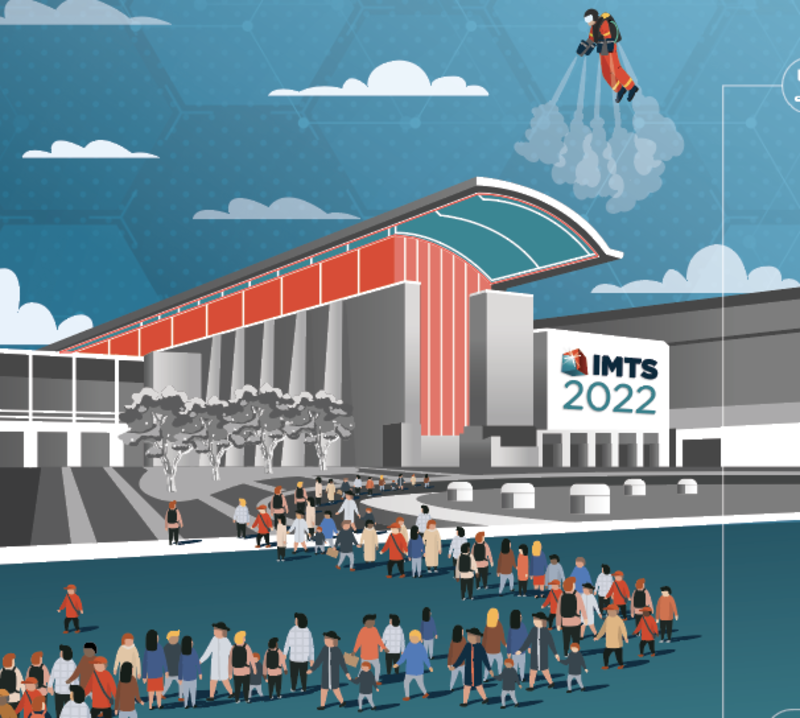On May 1, 1893, the World’s Columbian Exposition opened in Chicago. It was an international event with the participation of 46 countries. (Oddly, the event was meant to mark the 400th anniversary of Christopher Columbus’ discovery of America; it was a year off).
There were more than 65,000 exhibits containing more than 50,000 objects (which are now in The Field Museum). The exposition was spread out on 630 acres. It ran until Oct. 31.
There were a few interesting things on display. Like the Ferris wheel. It was invented by G.W.G. Ferris, a Pittsburgh-based engineer. The Ferris wheel at the World’s Columbian Exposition was 264 feet, taller than the one you can ride today at the Chicago Navy Pier, and each of its 36 cars could hold 60 people each – clearly a considerable feat of engineering and manufacturing.
More notably, there was electricity. In 1893 it was a novelty to many people in the country. So, the exposition was wired: U.S. President Grover Cleveland pushed a button, and that kicked off the generation of electricity for thousands of lightbulbs across the exposition as well as for electrical appliances shown in some of the exhibits.
The electricity was AC. George Westinghouse had won the bid for the fair, beating Thomas Edison and his DC technology.
In the Hall of Machinery there were 12 1,000-horsepower generators. Westinghouse had worked with Nikola Tesla on developing the polyphase system of AC power generation and transmission.
It is argued that the demonstration of AC power to the more than 25 million attendees established it rather than DC, much to Edison’s chagrin.
It could be argued that the 264-foot Ferris wheel proved the mechanical ingenuity of engineers, and the use of electricity showed the transformative power of technology.
Then and Now
Which brings us to IMTS 2022. Just as the timing of the World’s Columbian Exposition was off (but what’s one year in 400?), this analogy might be imperfect. The purpose of the first IMTS, formally the National Machine Tool Builders’ Exposition, held in 1927, was to serve as a science fair, as the machines were not for sale.
IMTS 2022 will run from Sept. 12 to 17 – six days, not six months. There will be more than 2,000 exhibitors, not some 65,000. By contemporary trade show standards, IMTS 2022 has a massive footprint: It will take place in the entire McCormick Place complex with some 1.3 million square feet of space taken up. And while there were some 25 million people at the 19th-century expo and there were but 129,000 people at IMTS 2018 – an IMTS record – it needs to be kept in mind that while the World’s Columbian Exposition was meant to draw in anyone and everyone, IMTS 2022 is focused on those people who are currently involved in manufacturing technology (or who will be in the not-too-distant future – as in students). Both events include international exhibitors and attendees.
But this comparison with the World’s Columbian Exposition is not simply predicated on the city of Chicago.
The Purpose
Rather, the point of the 19th century expo was predicated on the concept of showing advances in technology that would be of use to broad portions of the population. A point of IMTS 2022 is to show attendees advances in manufacturing technology that are similarly germane to broad portions of durable-goods producers: To show the democratization of manufacturing technology.
Over the past several years, there have been advances in tooling, machinery, automation, and systems that were once largely in the purview of big manufacturers, such as those in automotive and aerospace. This equipment was both comparatively complicated and expensive, such that it took the resources of large companies to productively deploy it.
But just as has been the case in other types of technology, there has been a decided drive on behalf of the providers to make this far more accessible to people.
Tech Advances
Think of computer tech. In 2003 the first 64-bit processor for personal computers was released, the Athlon 64 from AMD. While that was special, it is now expected by anyone who is buying a PC to browse the web – which really wasn’t a consumer consideration until Netscape released its browser in 1994. Google bought Android in 2005. Apple launched the iPhone in 2007.
Which of those things don’t affect you right now?
That technology has gone from only being for specialists to essentially everyone.
Again, while the analogy isn’t exact, and as the “everyone” in this case would be manufacturing professionals, it is clear that the same sorts of changes have been occurring in production technology.
Democratization
A number of technologies have contributed to the democratization of manufacturing technology. They include:
Networking and communications technologies (thanks, in part, to MTConnect) are now readily available to one-person shops, allowing them to link to other similarly sized operations to create a virtual manufacturing operation, even though the facilities are thousands of miles apart.
Robots have gone from being large devices for spotwelding, diecasting, and painting in auto assembly plants to not only small, easy-to-use 6-axis or SCARA devices but to collaborative robots that can be implemented to work alongside people in production facilities of all sizes.
Digital tools – not only for designing components and running machines – have become nearly ubiquitous: A Google search of “CAD for iPad” returns over 57 million results. And digital twins have gone from being something used by NASA in 2010 to usable tools for a wide array of operations.
Additive manufacturing is now something that is as readily available as multispindle machine tools – and both were comparatively expensive to acquire and difficult to use not that long ago.
Again, all of this goes to the point of the democratization of manufacturing technologies.
Places To Go, People To See
Because of the extent of the floorplan at the McCormick Place complex, there is the separation into nine different pavilions, each of which is dedicated to a discrete number of technologies.
But there is an aspect to the pavilions that shouldn’t be overlooked: Historically, pavilions have been meeting places. So, those who visit any of the IMTS 2022 pavilions are likely to encounter like-minded people. This is an opportunity that should not be overlooked or underestimated. One of the most important aspects of IMTS 2022 – and this would be the case even had we all not been comparatively isolated from others due to the pandemic for the past couple years – is that visitors not only come to see the new technologies on display but to meet with people from different companies, different countries, and to exchange ideas and experiences.
The Pavilions
Abrasive Machining/Sawing/Finishing
North Building, Level 3
Abrasive machining can remove cubic inches of material while precision grinding provides surfaces measured in Ra.
Among the equipment here: Grinders (cylindrical, internal, angular wheelside, creep-feed, through-feed, centerless, surface, abrasive belt, jig, tool and cutter, universal, cam); bench, crankshaft and abrasive cutoff machines; saws (band, cold); lapping machines; balancing machines; honing machines; polishing machines.
Additive Manufacturing
West Building, Level 3
According to the ISO/ASTM 52900 standard, “Additive manufacturing is the general term for those technologies that, based on a geometrical representation, create physical objects by successive addition of material.” Said more simply, this is a technology that allows you to do things ranging from making things that couldn’t otherwise be made for reasons ranging from complexity to types of materials to creating parts or tools in a matter of days that might otherwise require weeks.
Types of additive to be shown: Vat photopolymerization; power-fed fusion; binder jetting; material jetting; sheet lamination; material extrusion; directed energy deposition.
Controls and CAD-CAM
East Building, Level 2 & Level 3
Everyone knows about the First Industrial Revolution. Who didn’t learn about James Watt and Eli Whitney in elementary school? But what of the Second Industrial Revolution? This overlooked stage in technical development is arguably analogous to the Fourth Industrial Revolution (aka Industry 4.0) that we are in today. Then – in the late 19th and early 20th centuries – networks were created with the telegraph (digital) and trains (physical). Electricity allowed the powering of machinery for more efficient factories. And so, today there is the networking of digital information among machines and entire enterprises.
Digital technologies or Industry 4.0 at IMTS 2022: CIM/CAD/CAM systems; CNC controls; automation management systems; communications systems and LAN; software development systems services; computers and software; instruments-controls and systems integrations services.
Fabricating & Lasers
North Building, Level 3
Although there are advances such as various types of composites and other polymer-based materials, by and large the greatest proportion of durable goods are produced with metals, oftentimes requiring forming (whether it is a fender for a car or a door for a fridge). Associated are processes from cutting to cleaning, with the first requiring increasingly high levels of precision to reduce waste and the latter being done in ways that are not environmentally deleterious.
Among the equipment here: Plasma machines; coiling, bending, and forming machines; shears; press brakes; stamping presses; roll formers; heat-treating equipment; lasers; waterjets; marking machines; punching equipment.
Gear Generation
North Building, Level 3
Remember the quote from Archimedes, “Give me a lever and a place to stand and I will move the earth”? Well, it so happens that when you have two gears, you have a lever. So, arguably gears and the means to make them have been undergoing improvement since circa 250 BCE. They are still leveraging power in things ranging from precision medical devices to wind turbines.
This pavilion includes: Gear hobbers, shapers, cutters, grinders, shavers; broaching equipment; measuring machines.
Machine Components/Cleaning/Environmental
East Building, Level 2
Consider machine components in the context of “For the want of a nail.” Without them, whether it is a servo or a way cover, things don’t operate smoothly (if at all). And as for the cleaning and environmental aspects: Not only are there regulatory and health and safety issues, but large manufacturers are also requiring suppliers to be in environmental compliance, to say nothing of social awareness. Yes, this matters. A lot.
Included: Filtration, purification, separation, electrical, noise control equipment; washers and cleaners; ballscrews, bearings, spindles, motors; conveyors and AGVs; assembly, motion control, and test equipment; software.
Metal Removal
South Building, Level 3
Yes, subtractive manufacturing. Still the means by which most durable goods manufacturing is performed. But now with greater levels of capability, precision, and networking capability. To borrow the old Oldsmobile line: “Not your father’s machine tools.”
Among the machines, centers, and systems: Machining and turning centers; boring, drilling, transfer, screw, milling, turning, EDM machines; automated manufacturing and assembly systems.
Quality Assurance
East Building, Level 3
“If you cannot measure it, you cannot improve it.” – Lord Kelvin
“If you can’t measure it, you can’t change it.” – Peter Drucker
“One accurate measurement is worth a thousand expert opinions.” – Grace Hopper
Smart people, one and all.
This pavilion includes: Various measuring machines (coordinate, laser, vision); gaging systems (stand-alone, in-process); and software.
Tooling & Workholding Systems
West Building, Level 3
No cutting is going to occur without a tool. No accurate cutting (or forming or measuring or …) is going to occur without fixturing. Which goes to the point that no matter how sophisticated, complex, or networked your operation, without these things, it simply won’t work as planned.
At IMTS 2022: Cutting tools; tool holders; work holders; jigs and fixtures; coolants and fluids.
See You in Chicago for IMTS 2022!
The World’s Columbian Exposition was transformative as the 19th century segued into the 20th. And arguably, IMTS 2022, showcasing advances in machinery, software, automation, peripherals and more, will provide transformative capabilities to those manufacturers who embrace the tech as they help build the future.






